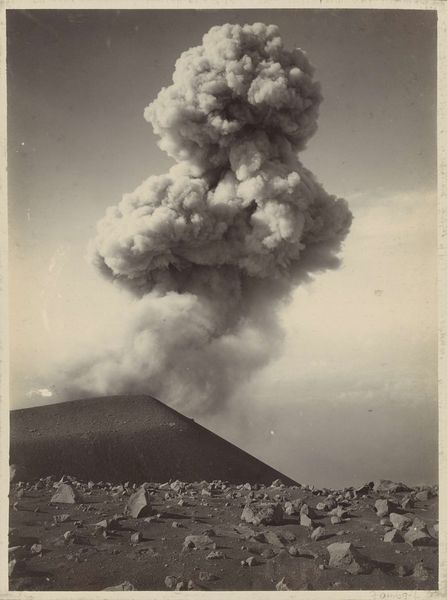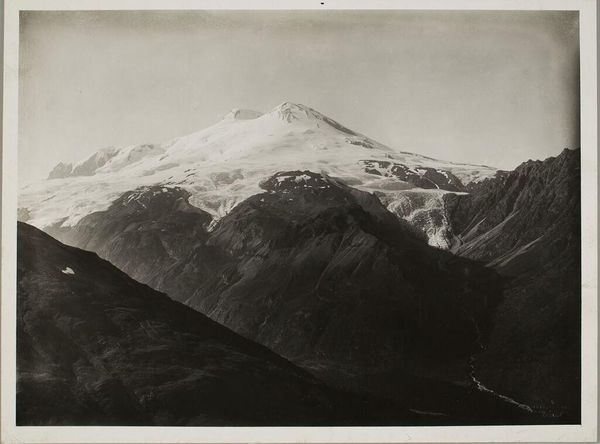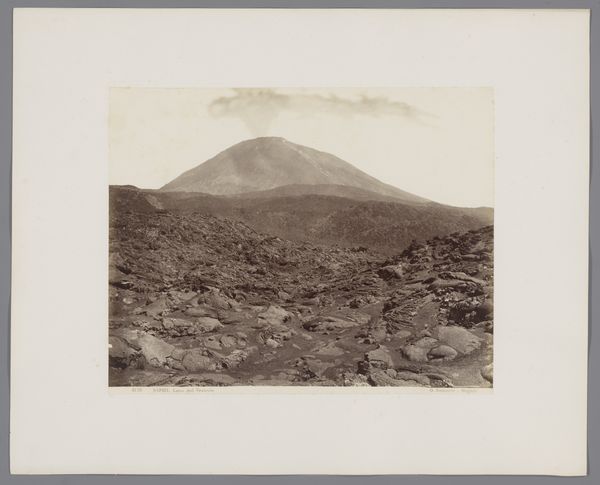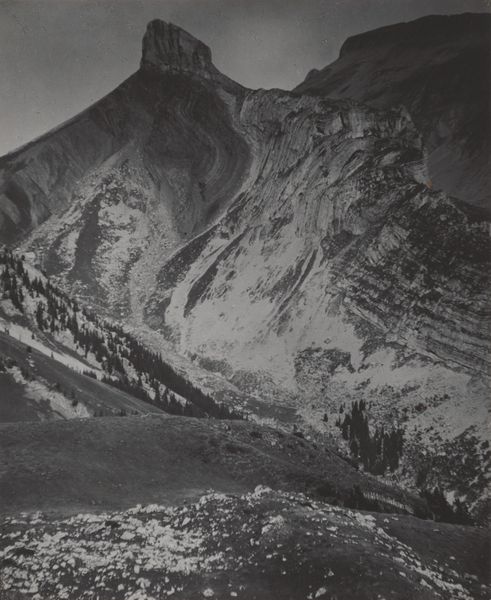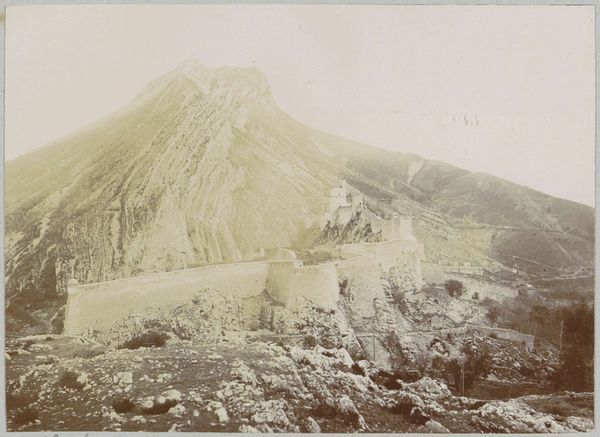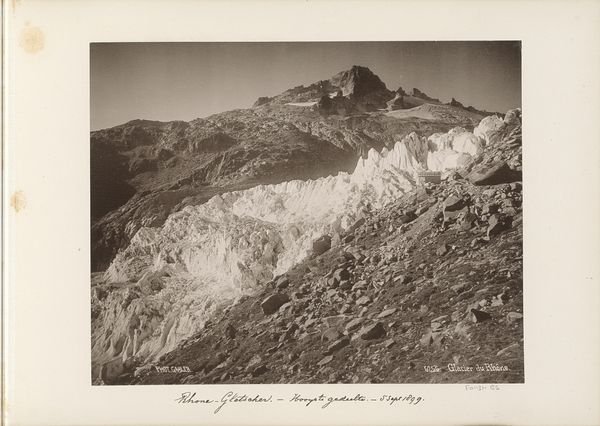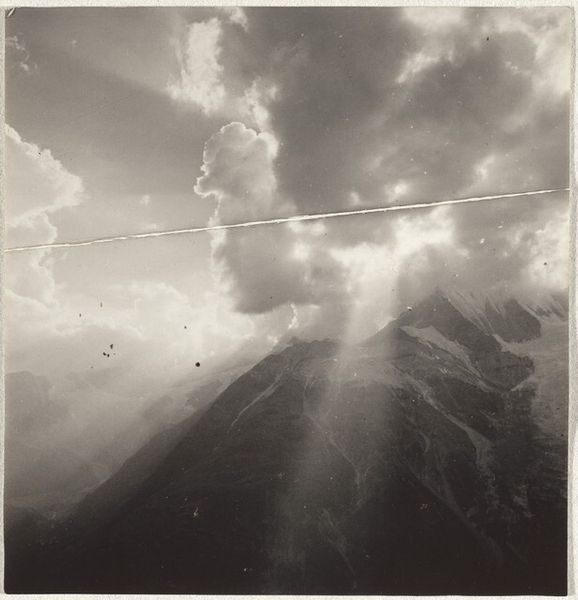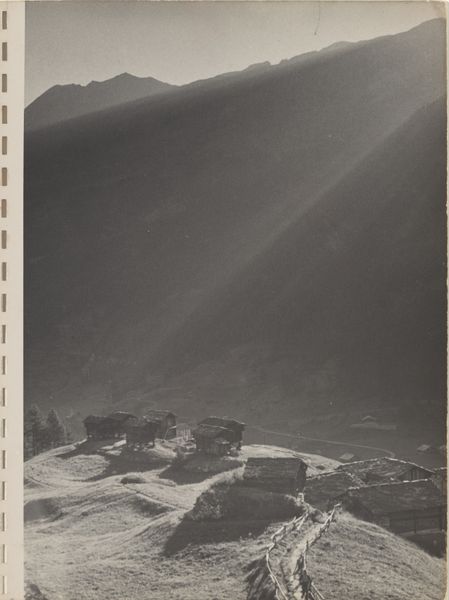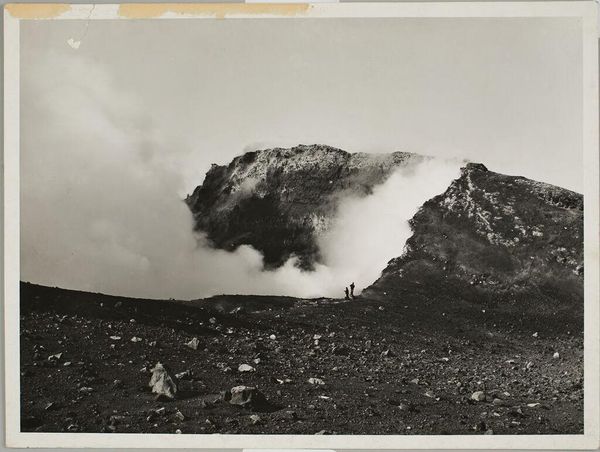
photography, photomontage
#
black and white photography
#
landscape
#
nature
#
photography
#
outdoor scenery
#
photojournalism
#
photomontage
#
monochrome photography
#
realism
#
monochrome
Dimensions: height 21 cm, width 15 cm
Copyright: Rijks Museum: Open Domain
Editor: This black and white photograph, "Hoofdkwartier VN," possibly taken between 1950 and 1951 by New York Times Photos, presents a dramatic landscape. The looming volcano and the UN flag create a striking juxtaposition. What can you tell me about the materials and context behind this photo? Curator: I see a fascinating commentary on labor and power in the image's construction. Consider the New York Times's role as a disseminator of information. This isn’t just a landscape; it’s a carefully constructed narrative mediated through photographic processes. The materials – the film, the paper, the ink – are all products of industry, embedded with specific economic and political values. Editor: So, it's less about the scenery and more about how it was captured and shared? Curator: Precisely. The choice of black and white photography itself is a deliberate one. What kind of work had to be involved to create this high-contrast picture and to emphasize the symbolism? This could influence how the photograph would be distributed across media at the time. Consider the materiality of newsprint, how the image reproduces. Editor: That's interesting! It really shifts the focus from the scene itself to the means of its presentation and what it might stand for. Curator: Exactly! Think about the labor involved in setting up the shot. This impacts what we perceive and consume about a post-war society. The United Nations represents ideals of peace, juxtaposed with a raw image of natural disaster and how these materials connect in the history. Editor: It completely reframes how I see photojournalism and its purpose in conveying a very political message about progress. Curator: And that's the power of considering materiality. We look past the surface representation and into the web of social, economic, and political relationships that brought the artwork into existence. I now see it’s much more complex than I originally understood.
Comments
No comments
Be the first to comment and join the conversation on the ultimate creative platform.

